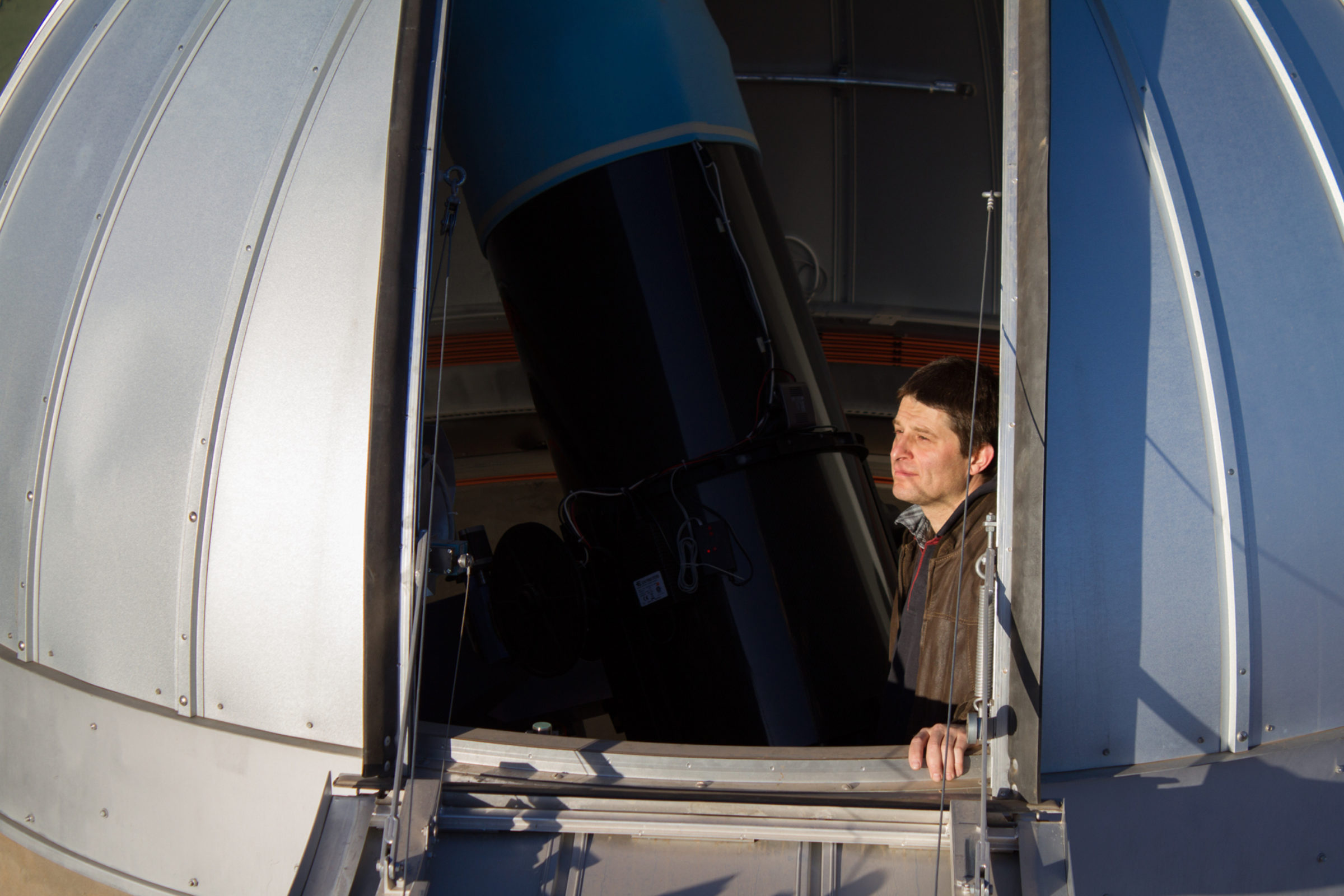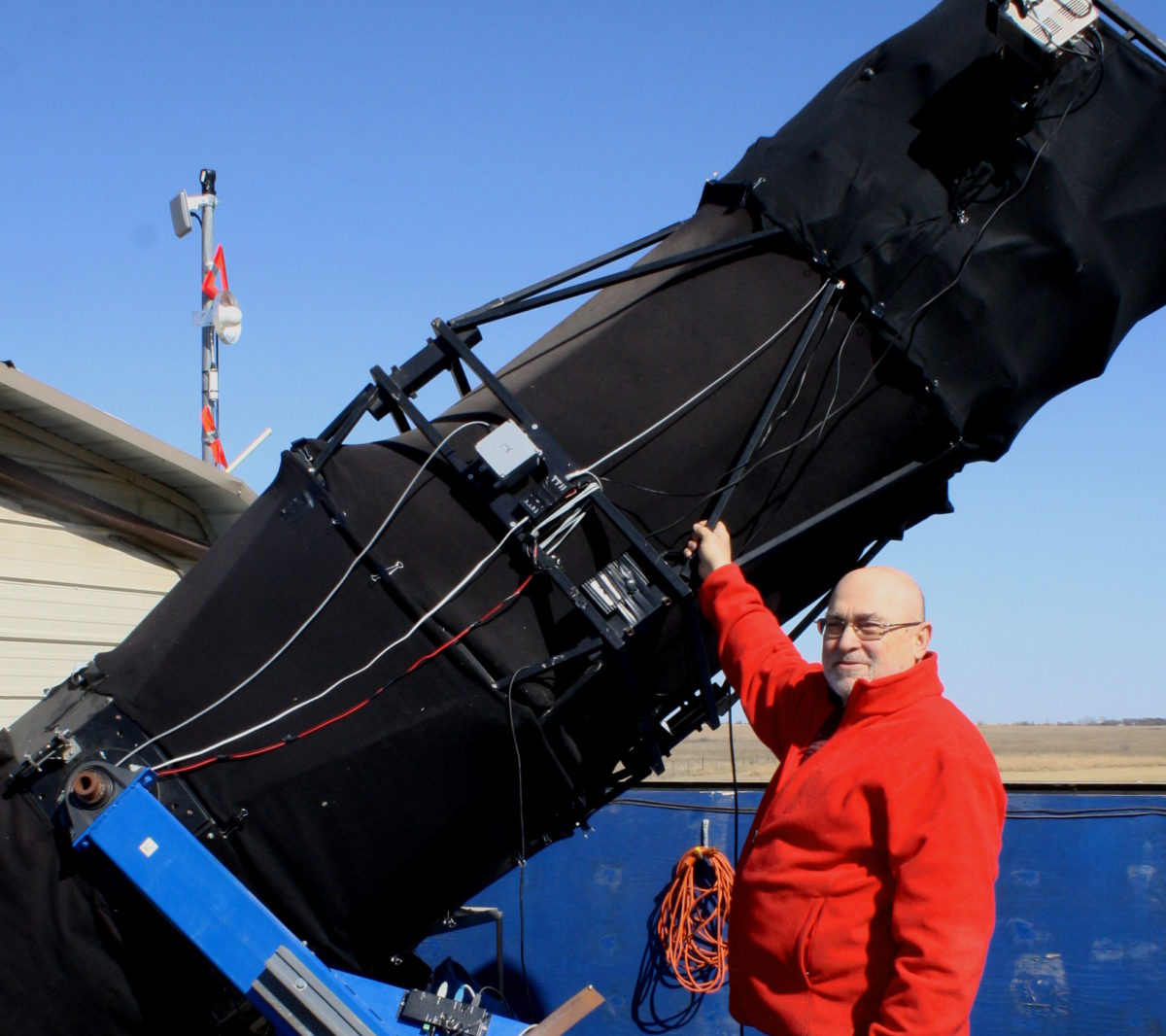The Planetary Society Announces Largest Award Ever to Asteroid Observers Through Global Grant Program
2018 Gene Shoemaker Near Earth Object Grant winners will use funds to improve equipment, contribute to NEO research
For Immediate Release
March 12, 2018
Contact
Danielle Gunn
Email: [email protected]
Phone: +1-626-793-5100
Pasadena, CA (March 12, 2018) — The Planetary Society, the world’s leading non-profit space interest organization, today announced its largest financial contribution ever to the winners of its Gene Shoemaker Near Earth Object (NEO) grant program, an initiative that funds leading asteroid observers, primarily advanced amateur astronomers.
“The Shoemaker Grant winners fill a crucial role in providing observations to protect our planet from asteroid impact,” said Planetary Society Chief Scientist Bruce Betts. “Professional observatories have limited telescope time and geographical distribution, so talented, well equipped amateurs provide critical data, particularly in the areas of follow-up observations that yield detailed orbits, and asteroid characterization studies that tell us about the nature of the asteroids.”
Seven winners located on four continents were awarded a total of $59,300. The funds were made possible from generous contributions by Planetary Society members and donors. The announcement marks the first time a Shoemaker NEO award has been granted to amateur astronomers operating an observatory located in Africa (Morocco), meaning the grant program has now funded observatories located on every continent except Antarctica.
Past Shoemaker grant winners have made significant contributions to the discovery, follow-up, and characterization of potentially dangerous near-Earth asteroids, and other important scientific findings, using the upgrades facilitated by the grant money. In October 2017, two previous Shoemaker award recipients contributed to a major astronomical discovery when their teams helped confirm rings around the dwarf planet Haumea, the first discovery of a ringed world beyond the planet Neptune. Information about other past winners is available on The Planetary Society’s website.
2018 Gene Shoemaker NEO Grant Winners
Vladimir Benishek, of Sopot Astronomical Observatory in Serbia, will purchase a CCD camera and a temperature compensating focuser to create a second observing telescope at his facility. The system will be used primarily for asteroid characterization studies, specifically photometry (brightness) measurements used to determine light curves (brightness with time) that facilitate the determination of spin rates and discovery of binary asteroids: where there are two asteroids rather than just one.
Daniel Coley, at the Center for Solar System Studies (CSSS) in California, USA, will purchase a CCD camera to use with a newly acquired 0.7 m (28 in) telescope at their facility in California, USA. The new camera system will be used primarily for photometry to study the physical characteristics of asteroids including study of the binary nature of some of the asteroids. Coley and colleagues also collaborate with radar observers to better enable determination of near Earth asteroid shape, spin axis, and rotation periods.
Robert Holmes, president of the Astronomical Research Institute (ARI) in Illinois, USA will purchase a CCD Camera as well as an adapter for their 0.61m telescope. The new camera will replace a camera purchased with a 2008 Shoemaker NEO Grant. The previous camera was used to take more than 52,000 individual measurements of NEO positions (astrometry) to facilitate determination of NEO orbits. The new camera will improve sensitivity and have a much larger memory buffer. This grant made possible by a gift in memory of Jonathan Masin.
Gary Hug, representing the Northeast Kansas Amateur Astronomer's League, will purchase several items to enable remote, robotic operation of the 0.7 meter Tombaugh Reflector at Farpoint Observatory in Kansas, USA. The Tombaugh reflector was recently upgraded by the group and now can do astrometry (position measurements) of objects as dim or dimmer than 22.5 visual magnitude, enabling among other things, follow-up observations used to determine orbits of recently discovered near Earth asteroids. This grant made possible by a gift in memory of Jonathan Masin.
Julian Oey, from New South Wales, Australia will purchase a 0.5m (20”) telescope to go with an existing mount, camera, and facility at the JBL observatory at a dark, dry location outside Bathurst, Australia. The remote controlled JBL facility will complement Oey’s successful Blue Mountain Observatory, providing two southern hemisphere sites with different weather patterns, helping avoid clouds. The new telescope will be used primarily to provide physical characterization of near Earth asteroids.
Michel Ory, using the Morocco Oukaïmeden Sky Survey (MOSS) in the High Atlas Mountains of Morocco, will purchase a new CCD camera to use with their 0.5 meter telescope. Ory and Claudine Rinner operate their MOSS telescope remotely from Switzerland and France, respectively. The new camera will increase their field of view and improve their sensitivity. Their focus is on astrometry (position measurements).
Donald Pray, at the Sugarloaf Observatory in Massachusetts, USA, will purchase a new mount for a 0.5 meter telescope. The new mount will improve image quality and overall pointing and tracking capability, and that, in turn, will improve data capture and photometric accuracy. He will sell the old mount and use money received to pay for a new camera for that telescope. In recent years, Pray has discovered the binary nature of more asteroids than any other amateur observer (Benishek was second).
In addition to its Shoemaker grant program, The Planetary Society works to engage and inform the global community in planetary defense topics.
The Planetary Society began the Gene Shoemaker NEO grant program in 1997. It was named for pioneering planetary geologist Gene Shoemaker, whose lifetime of discoveries has significantly helped scientists to understand the process by which asteroids impact planets and the nature of the NEO population. Over the 20 year history of the program, $382,000 has been given through 56 awards in 18 countries.
Interviews available upon request.
Media Resources


About The Planetary Society
With a global community of more than 2 million space enthusiasts, The Planetary Society is the world’s largest and most influential space advocacy organization. Founded in 1980 by Carl Sagan, Bruce Murray, and Louis Friedman and today led by CEO Bill Nye, we empower the public to take a meaningful role in advancing space exploration through advocacy, education outreach, scientific innovation, and global collaboration. Together with our members and supporters, we’re on a mission to explore worlds, find life off Earth, and protect our planet from dangerous asteroids. To learn more, visit www.planetary.org.
###


 Explore Worlds
Explore Worlds Find Life
Find Life Defend Earth
Defend Earth


